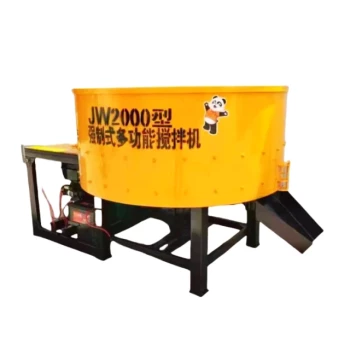Winding machines, especially CNC and automated models, offer significant advantages over traditional manual methods. These include improved production efficiency, reduced labor costs, enhanced precision, and greater versatility in applications. Modern winding machines like winding engines can handle complex winding patterns at high speeds while maintaining accuracy, making them indispensable in industries requiring coil production for motors, transformers, and other electrical components.
Key Points Explained:
-
Enhanced Production Efficiency
- Operate at high speeds (2-3x faster than manual winding)
- Continuous operation without fatigue (24/7 capability with automation)
- Example: CNC models can complete complex winding patterns in minutes versus hours
-
Precision Engineering Capabilities
- Micron-level wire positioning accuracy (±0.01mm tolerance)
- Consistent tension control (programmable force parameters)
- Perfect layer stacking (critical for transformer/motor performance)
-
Labor Optimization
- 80-90% reduction in direct human involvement
- Single operator can manage multiple machines
- Eliminates repetitive strain injuries from manual winding
-
Cost Reduction Factors
- Lower scrap rates (≤1% vs 5-8% manual)
- Reduced training requirements (simple CNC programming)
- Energy-efficient models cut power consumption by 15-20%
-
Customization Flexibility
- Quick-change jig systems (under 5 minute changeovers)
- Programmable winding patterns (100+ presets)
- Scalable for R&D through mass production
-
Maintenance Advantages
- Self-diagnostic systems predict maintenance needs
- Modular components enable fast repairs
- Average uptime of 98% in industrial settings
-
Application Versatility
- Handles wire gauges from 0.02mm to 6mm diameter
- Compatible with copper, aluminum, and specialty alloys
- Used across industries: automotive, aerospace, energy, medical
Ever wondered how these machines maintain perfect tension across different materials? Advanced servo systems constantly monitor and adjust torque based on real-time feedback from multiple sensors along the wire path. This technological integration transforms what was once a skilled artisan's task into a repeatable engineering process. The result? Components that power everything from electric vehicles to life-saving medical imaging equipment.
Summary Table:
| Advantage | Key Benefit |
|---|---|
| Production Efficiency | 2-3x faster than manual winding; 24/7 operation capability |
| Precision Engineering | ±0.01mm tolerance; programmable tension control for perfect layer stacking |
| Labor Optimization | 80-90% reduction in human involvement; eliminates repetitive strain injuries |
| Cost Reduction | ≤1% scrap rate; 15-20% energy savings; lower training requirements |
| Customization Flexibility | Quick-change jigs (<5 mins); 100+ programmable patterns; scalable for R&D |
| Maintenance Advantages | Self-diagnostic systems; modular components; 98% uptime in industrial settings |
| Application Versatility | Handles 0.02mm–6mm wires; works with copper, aluminum, alloys; multi-industry |
Upgrade your coil production with Garlway’s advanced winding solutions—contact us today to explore precision-engineered winches and construction machinery!
Related Products
- Ready Mixer Machine for Construction Ready Mix Machinery
- Commercial Construction Mixer Machine for Soil Cement Mixing Concrete
- JZC1000 Industrial Concrete Mixer Machine Cement Mixer Price
- Portable Electric Small Cement Mixer Concrete Machine
- Shaft Mixer Machine for Cement and Regular Concrete Mixing
People Also Ask
- How to choose the right concrete mix? Key Factors for Strength & Durability
- What are the 4 classifications of concrete mix? Essential Guide for Construction Pros
- What are the benefits of concrete mixer machine? Boost Efficiency & Quality in Construction
- Are there different types of concrete mix? Explore Varieties for Optimal Construction
- How does concrete not harden in a truck? The Science Behind Workable Concrete
















